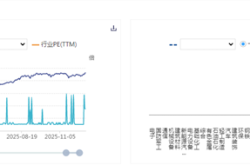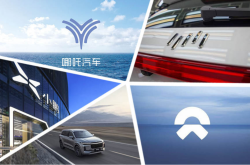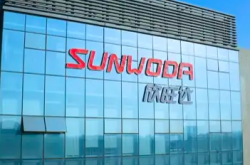BYD: The Ultimate Battle for Auto Manufacturing
![]() 07/12 2024
07/12 2024
![]() 619
619
In BYD's previous in-depth article, "Price Slayer Still Making Big Profits, What Does BYD Have to Fight the Crowd?", Dolphin Insights explored the advantages of BYD's gross margin through deep vertical integration, particularly self-research and production of batteries, as well as cost-driven technology choices in vertical integration. This article focuses more on the business choices of vertical integration itself, the strategic approach in the latter stage of integration, and attempting to understand the certainty of BYD's future business and valuation based on these. Dolphin Insights' analysis of BYD centers on the following key questions: First, is BYD easy to imitate? Is there a second BYD? Second, the latter half of electric vehicle vertical integration: reducing prices to gain market share, dividends, or smart vehicle vertical integration? Third, how to understand BYD's valuation?
Below is the main text
I. Can Someone Recreate Another BYD?
Through the previous analysis, BYD's core advantage in gross margin lies in its technology/engineering path selection under the mindset of extreme cost reduction (choosing cheaper lithium iron phosphate batteries and easier-to-mass-produce prismatic batteries; using lower-cost single-gear series-parallel hybrid technology), as well as its deeply integrated vertical industrial layout. If the former is merely a difference in technology path selection, and the technical gap between hybrid technologies is increasingly narrow, the real question is how difficult it is to replicate BYD's vertical integration, especially as more and more OEMs have begun building their own battery capacity.
1) Characteristics of Vertical Integration in the Industry – Downstream: Rigid Demand + Oligopoly; Upstream: Long Chain + Heavy Capital + Medium Technology
Among the industries covered or focused on by Dolphin Insights, photovoltaic and automotive leading companies both exhibit a strong tendency towards vertical integration. Industries most suitable for vertical integration generally have several characteristics: a. Terminal rigid demand with stable prices and a monopolistic or oligopolistic market, leading to stable market share for leading companies. Stable downstream user demand, stable prices, and high market share ultimately aim to ensure that the heavy asset investments in vertical integration can transcend cycles and guarantee capacity utilization. b. Long industrial chains with capital barriers and certain technical barriers, but not so high as to completely block new entrants. Combining (a-b) means: Terminals are rigid demand products for users, requiring frequent use, thus users demand low prices. Companies providing these products and services have sufficient incentive to continuously drive down prices. If the industrial technical barriers are too high and difficult to overcome, integration becomes unfeasible.
Capital barriers and certain technical barriers mean that big players can enter while small players cannot. Once big players establish capacity, they can leverage front-end scale effects to reduce procurement costs, improve capacity utilization, and inversely dilute their sunk costs from heavy asset investments. Lower costs can then inversely drive front-end product price reductions and market share gains. In traditional industries, oil is a typical example of vertical integration: from exploration, development, refining, transportation to retail, the industrial chain is ultra-long with ultra-high capital barriers and certain technical barriers. The most important terminal oil demand is nearly rigid, and both domestic "three oil giants" and overseas oil companies are clear oligopolies. There are too many industries with long upstream chains, capital barriers, and technical barriers. A few examples include cloud computing, which has both capital and technical barriers, but the upstream manufacturing and design barriers for computing power are so high that it is difficult to enter, so cloud computing vendors are highly dependent on NVIDIA and TSMC.
More crucially, for the downstream: heavy investments in capacity must be guaranteed by certain demand, so the downstream should preferably be a rigid demand product with absolute monopoly. If the downstream product is not a rigid demand, and the vertically integrated company does not have an ultra-high market share as compensation, then during industry downturns, the heavy assets of vertical integration could become a "poison" that breaks the company's cash flow. Both cloud services and oil are basically rigid demand products + monopoly/oligopoly markets for end-users. Conversely, applying this to BYD: the upstream characteristics are largely met, but the downstream automobile as a whole is not a rigid demand product. It is only semi-rigid in the price range of 80,000-200,000 yuan. Fortunately, this price range is large enough, and coupled with high market share, it justifies the heavy investments in self-research and self-built capacity.
2) Is BYD's Vertical Integration Easy to Imitate? It Just Looks Easy
In the era of traditional fuel vehicles, leading automakers were largely self-researching and self-producing core technologies, and vertical integration in core technologies was already evident.
The core change from fuel to electric vehicles, in Dolphin Insights' view, is that the fuel tank that required repeated refueling has become the battery that requires repeated charging, shifting the cost of using the vehicle (originally paid to gas stations) upfront into the cost of buying the car, leading to a dramatic change in the cost structure of auto manufacturing.
If the car remains a means of transportation, the core of vertical integration in the electric era is clearly the upfront shift in acquisition costs, with the largest value and technical/capital barriers in car manufacturing going to batteries, but not so high as to be completely exclusive. In recent years, major capable OEMs have generally begun self-researching and producing batteries, investing in battery production lines. The question is, how easy is it for others to imitate this vertical integration, especially in batteries? The core of imitation lies in sales volume scale: According to McKinsey's report, from the perspective of scale effects, when automobile production reaches 1.5 million vehicles and battery demand reaches 100 GWh, self-researched batteries gain a competitive advantage, which can be leveraged to reduce prices and increase market share, forming a positive cycle from capacity to market share. Judging from 2023 new energy vehicle sales, only BYD and Tesla currently meet the scale advantage in battery demand. Volkswagen, Geely, Changan, SAIC, GAC, and other automakers meet the break-even threshold for self-researched battery production, but are currently constrained by mass production experience, and are expected to gradually replace batteries on a small scale after 2024-2025. New forces such as Xpeng and NIO are still below the self-researched battery threshold, and mid-term self-supply at scale is difficult.
Currently, BYD's early full-chain vertical integration first-mover advantage has been confirmed: continuous price reductions without compressing gross margins have demonstrated the confirmation of the positive cycle. Competitors in the same segment as BYD's affordable cars will find it difficult to catch up if they cannot match its cost-effectiveness. This is also what we saw during BYD's DM 4.0 cycle from 2021-2023: a. The first stage was a leading edge in hybrid technology; b. In the second stage, with the leading edge narrowed, BYD could offer this technology to users at a lower price without significantly eroding gross margins.
II. The Latter Half of Electric Vehicle Vertical Integration: Reducing Prices for Market Share, Dividends, or Smart Vehicle Vertical Integration?
Over the past three years, since BYD's success with the DM 4.0 technology, the company has been continuously expanding its electric vehicle production capacity. In terms of capital expenditures, intensive investments began in 2021 and 2022, tripling each year for two consecutive years. This trend reached its peak in 2023 with the highest level of capital expenditure.
a) The Pre-Investment Period for Capacity is Basically Ending
However, since the fourth quarter of 2023, capital expenditures have shown signs of significant contraction. Although there was a slight increase in the first quarter of 2024, it has narrowed compared to the peak in 2023. In terms of construction in progress, 2022-2023 were the concentrated landing periods, with new construction projects peaking in the second half of 2022 and the first half of 2023. However, new construction projects declined for the first time in the second half of 2023, while construction in progress reached a record high, indicating accelerated capacity landing. The decline in new construction projects also means that BYD's current round of capacity expansion may have reached a phased end, with subsequent expansion speeds gradually slowing.
b) The End of Pseudo-Profits, Are Real Profits Coming Soon?
Looking at the real financial cost of this capacity expansion period: In 2023, for example, BYD reported a net profit of 31.3 billion yuan. After adding back non-cash expenses such as amortization, depreciation, and asset disposal related to main operations, Dolphin Insights estimates the true operating profit at approximately 76 billion yuan. However, capital expenditures for 2023 alone reached 120 billion yuan, meaning BYD invested all its profits into expanded reproduction, and even that was not enough. BYD's cash flow frequently reached new highs mainly due to occupying upstream funds, i.e., supply chain funds. In other words, due to capacity expansion, BYD's reported profits are illusory, with so-called profits achieved through capitalized accounting records of fixed asset investments. The real earnings from car sales come from upstream operating funds.
Combining a)-b), we mainly consider two questions: operationally, what to do after the investment period ends? And in terms of capital allocation, when real profits gradually emerge, should they be used to increase shareholder returns or invest in new areas? Dolphin Insights will first address the first question:
a) Operationally: After the Investment Period Ends, What's Next?
The answer to this question is simple: After investment ends, the next step is inevitably to find ways to increase capacity utilization, especially given BYD's scattered capacity distribution due to government investment attraction, which may exacerbate the backlash of insufficient capacity utilization. Front-end price reductions for market share and back-end improvements in capacity utilization are inevitable path choices. Currently, only BYD can fully leverage integration advantages at this scale (traditional automakers like Geely generally have insufficient sales volume, while new forces like NIO and Tesla generally lack sufficient vertical integration depth). Therefore, it is easy to guess BYD's possible approach to car sales: ① With DM 5.0 still having a technological generational gap and BYD's orders being sufficient, it can use the time difference in technology to sell cars. However, Dolphin Insights estimates this time difference at only one year, as competitors like Geely will launch similar technologies in the second half of this year, with cars going on sale next year. ② When competitors catch up, "same technology, lower price," using BYD's vertically integrated scale advantages to ensure sufficient capacity utilization of back-end heavy assets and increase market share in the 100,000-200,000 yuan rigid demand price band, where gross margins are sufficiently superior, through pricing strategies. Especially looking at the internal structure of car price segments, the relatively red-hot price band this year is still the 50,000-200,000 yuan segment, accounting for the highest proportion of total passenger car sales (60-70%).
This price band is almost BYD's "domination zone." And it is in this price band that the overall penetration rate of new energy vehicles in January-May 2024 reached only 35%, still lower than the 200,000-300,000 yuan price band dominated by pure electric vehicles (overall penetration rate of 49%) and the above 300,000 yuan price band dominated by hybrids (overall penetration rate of 44%). Meanwhile, in this price band, hybrids are the main force driving the substitution of fuel vehicles in 2024. The main reason is that users in this price band have stricter requirements for cost-effectiveness, and the price difference between hybrid and pure electric versions of the same car model is generally 0.3-40,000 yuan lower for hybrids due to lower battery capacity and cheaper batteries. In addition, plug-in hybrid vehicles have no range anxiety, while potential users of pure electric vehicles in this price band are generally in second- or third-tier cities or below, where charging facilities are inconvenient and range shortcomings are obvious. In the core 100,000-150,000 yuan price band, hybrids are more economical choices in terms of both purchase cost (compared to pure electric vehicles) and usage economy (compared to fuel vehicles), considering range.
Currently, pure electric vehicles in the 50,000-150,000 yuan price band have obvious "bugs" in range (the price of all-domain 800V products cannot come down). Without a technological breakthrough in electrochemical materials, it will be difficult for pure electric vehicles to compete on price in this price band. In the 50,000-150,000 yuan price band market in 2024, Dolphin Insights estimates that plug-in hybrids will remain the main battleground for accelerating the substitution of fuel vehicles. Therefore, Dolphin Insights estimates that BYD will use two levers – technology (DM 5.0) + pricing (Glory/Champion editions) – in 2024-2025 to accelerate the elimination of fuel vehicles in the 50,000-200,000 yuan price band and regain some of the market share lost in 2023.
b) Capital Allocation: When Real Profits Gradually Emerge, Increase Shareholder Returns or Invest in New Areas?
To answer this question, let's first refer to Toyota, the "universe automaker" in a steady state: Firstly, a very obvious feature is that even in the stable period, as a heavy asset industry, Toyota still needs to invest a considerable amount of capital expenditures each year in equipment maintenance and replacement. Although the investment amount is still greater than the amortization and depreciation amount, the gap between the annual amortization and depreciation amount and the annual capital expenditure amount becomes smaller and smaller after stabilization.
Looking at Toyota's adjusted amortization, depreciation, and capital expenditures, i.e., the real cash profits available for distribution, Toyota allocates roughly 70%-80% of these profits to reward shareholders each year. After passing through the capacity expansion period, Toyota, with global annual sales of 8-9 million vehicles, is a solid dividend stock.
Looking at BYD, its capital investments have been too high in the past three years, resulting in negative real profits after adjusting for amortization, depreciation, and true cash outflows from capital expenditures. Theoretically, it is difficult to distribute dividends. Therefore, BYD's past dividends have been very nominal. However, the dividend announced at the end of 2023 was significantly increased: 9 billion yuan, which is not bad considering BYD's negative real profits. But based on the current decline in capital investments, Dolphin Insights estimates that BYD will soon have real profits available to shareholders rather than all used for expanded reproduction in 2025. It will be worth watching whether BYD transitions from a growth company to one driven by both stable growth and dividends, similar to U.S. stocks.
Of course, in capital allocation, BYD currently has a very obvious tendency: After the end of capacity expansion-related capital expenditures, expenses, specifically R&D expenditures to address shortcomings in the intelligence direction, have increased significantly, as evident in BYD's first-quarter financial report this year ("BYD: Auto Business Gross Margin 'Killing It,' Successfully Navigating the Trough?"). However, Dolphin Insights observes that R&D expenditures and capital expenditures are not on the same scale: BYD's annual capital expenditures exceed 100 billion yuan, while its annual R&D expenditures are only about 25 billion yuan. Even if R&D expenditures increase, the cash flow savings from declining capital expenditures will still be significant. Overall, Dolphin Insights still tends to believe that BYD is not far from the logical transition to a high-quality dividend asset.
III. How to Understand BYD's Valuation? (For specific valuation details, please visit the Changqiao App and enter the "Dynamics - Investment Research" section to view the article with the same name)
If BYD's previous round of gains was mainly driven by industry Beta, specifically the DM 4.0 product cycle, with the overall logic biased towards industry Beta dividends, then combining the above analysis (I-II), Dolphin Insights tends to believe that BYD's next stock price drivers will come more from its deep integration, returning to a dual-drive Alpha logic of market share gains and improved shareholder expectations. In this scenario, Dolphin Insights assumes: a. BYD's progress in domestic high-end pure electric vehicles is relatively slow, and BYD's overall approach will still mainly use price as a lever (unit prices remaining flat or even declining) to continuously gain market share (higher sales market share) in the rigid demand price range.
b. Overseas: Compared to Tesla's focus on Europe and China for overseas expansion, BYD's overseas strategy is more "scattered" due to access difficulties in the U.S. and tariff pressure in Europe – markets beyond Europe, America, Japan, and South Korea.
In Dolphin Insights' forecast of BYD's overseas sales, due to a 100% export tariff on the U.S., BYD is expected to mainly assemble and produce locally. When entering Europe, due to anti-subsidy tariffs imposed by Europe on BYD, the overall tax rate reaches 27.4%. After calculations, the gross margin of BYD's main models in the European market (with Atto 3 as the main export model) will drop from the original 29% to about 14% after tariffs are added. It is expected that BYD will gradually shift from whole vehicle exports to local assembly in the European market.
Overall, Dolphin predicts that BYD's total sales will increase from 3.02 million units in 2023 to approximately 8 million units in a stable state by 2028, leaving a gap of around 1 million units compared to Toyota, the sales leader in similarly positioned "affordable" models. This gap is primarily due to the European and American markets, but it is partially offset by higher market share in the domestic market and other overseas markets.
Similarly, referencing Toyota's gross profit margin, a comparable end-state gross profit margin expectation was made (note, there is no premium, whereas in contrast, Tesla's guidance for its end-state gross profit margin aims to be a few percentage points higher than the current gross profit margin of traditional internal combustion engine vehicles). However, considering that BYD also has an in-house battery business, it is very likely that its long-term gross profit margin could exceed Toyota's. Based on this conservative estimate, excluding the incremental contribution from the battery business's gross profit margin, BYD's automotive gross profit margin is even slightly below Toyota's stable-state gross profit margin.
In this scenario, Dolphin's provided DCF valuation for BYD in a stable state would be approximately *** HKD per share. Given that the automotive industry is driven by product cycles, Dolphin also provides a PE valuation for reference. Based on the valuation range of assets, excluding net cash and the valuation of BYD Electronics and considering only the core assets of the battery and automotive business, BYD's margin of safety approximately aligns around *** HKD per share. However, if all components are summed up, BYD clearly has considerable upside potential.
The above value estimation is for reference only. But the bottom line is, as the industry's penetration dividends gradually disappear and the natural price competition brought by raw material cost reductions comes to an end, when the market truly needs to clear out excess capacity, BYD's competitive advantage becomes even more apparent. The end-game scenario becomes progressively clearer. In this situation, Dolphin starts to focus on the Alpha logic driven by BYD's enhanced market share and improved shareholder expectations after achieving deep integration.







